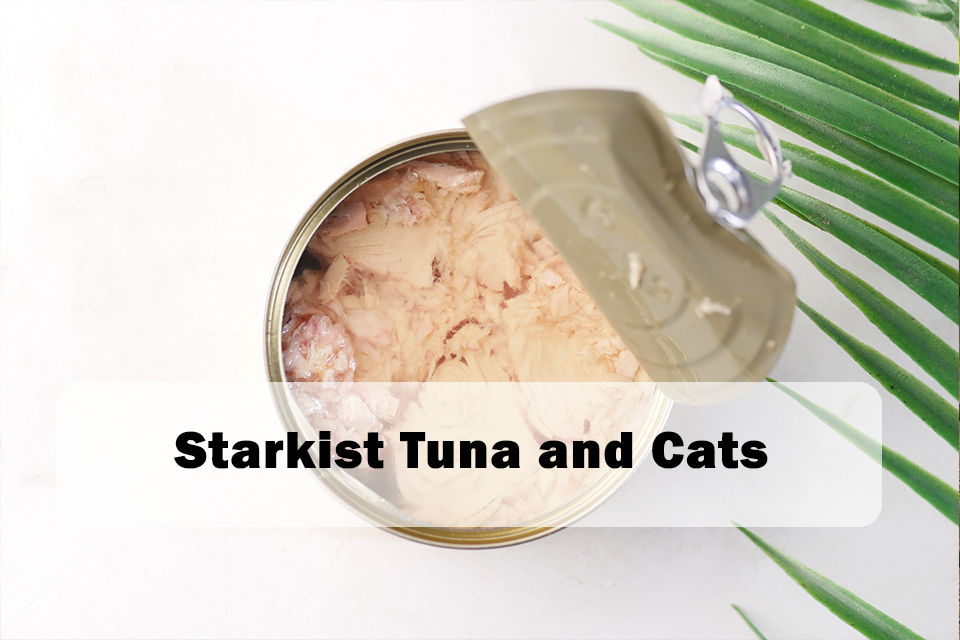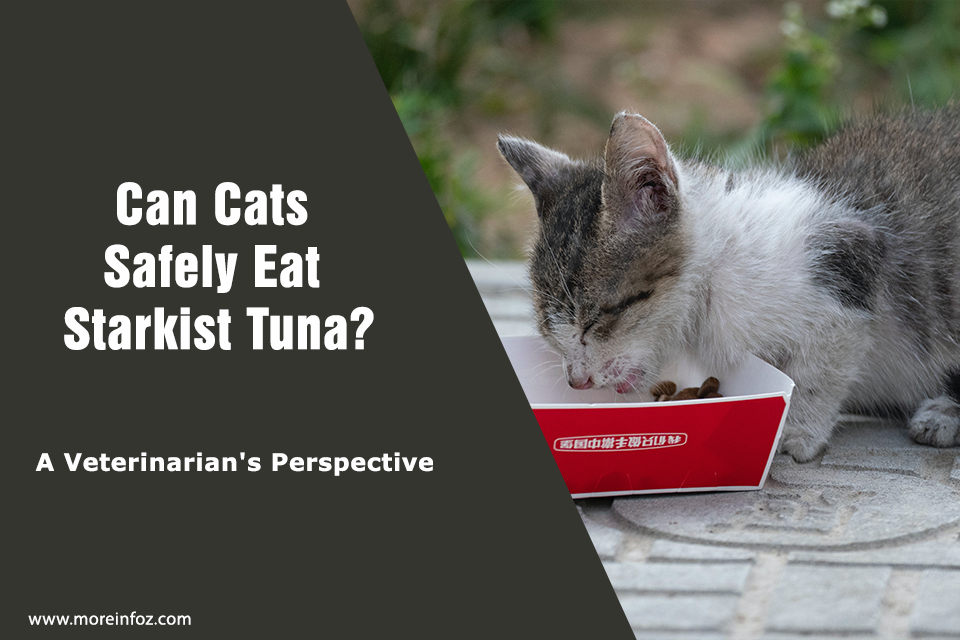Cats are known to be picky eaters, and their dietary needs can be quite specific. As a result, cat owners often wonder what human foods are safe for their feline friends to consume. One common question is whether cats can eat Starkist tuna, a popular brand of canned tuna.
Starkist tuna is a popular choice for humans due to its convenience and taste. However, when it comes to feeding it to cats, it’s important to consider a few factors. While tuna is a good source of protein and omega-3 fatty acids, it is not nutritionally complete for cats and should not be the mainstay of their diet. Additionally, some cats may be allergic to fish, so it’s important to introduce it slowly and watch for any adverse reactions.
Overall, while it’s not harmful for cats to eat Starkist tuna in moderation, it should not be a regular part of their diet. As always, it’s best to consult with a veterinarian to ensure your cat is getting the proper nutrition they need.
Understanding Starkist Tuna
Ingredients in Starkist Tuna
When it comes to the ingredients in Starkist Tuna, there are a few things you should know. The main ingredient is, of course, tuna. However, there are also a few other ingredients that are added to the tuna to give it flavor and preserve its freshness.
Some of the additional ingredients in Starkist Tuna include water, vegetable broth, salt, and pyrophosphate. While these ingredients are generally considered safe for cats to consume, it’s important to note that they do add to the overall sodium content of the tuna.
Nutritional Value of Starkist Tuna
Starkist Tuna is a good source of protein for cats. One 2.6 oz pouch of Starkist Tuna contains approximately 17 grams of protein. It also contains omega-3 fatty acids, which are important for maintaining a healthy coat and skin.
However, it’s important to note that Starkist Tuna is not a complete and balanced diet for cats. While it can be a healthy addition to your cat’s diet, it should not be the only thing your cat eats.
In addition, as previously mentioned, Starkist Tuna does contain sodium. While small amounts of sodium are necessary for your cat’s health, too much sodium can lead to health problems such as high blood pressure and kidney disease.
Overall, while Starkist Tuna can be a healthy addition to your cat’s diet, it should be given in moderation and should not be the only thing your cat eats. As always, it’s important to consult with your veterinarian before making any significant changes to your cat’s diet.
Can Cats Eat Tuna?
When it comes to feeding your feline friend, it is important to know what foods are safe for them to consume. Tuna is a popular seafood that many people enjoy, but can cats eat tuna? Let’s take a closer look.
Benefits of Tuna for Cats
Tuna is a good source of protein and omega-3 fatty acids, which are important for maintaining healthy skin and a shiny coat in cats. It also contains vitamins and minerals, such as vitamin D, magnesium, and potassium. In moderation, tuna can be a healthy addition to your cat’s diet.
Potential Risks of Tuna for Cats
While tuna can provide some health benefits to cats, there are also potential risks to be aware of. One concern is the high levels of mercury found in some types of tuna. Mercury can be toxic to cats and cause health problems over time. It is important to choose low-mercury options, such as skipjack or canned light tuna, and limit the amount of tuna your cat consumes.
Another potential risk is the presence of bones in canned tuna. These bones can be a choking hazard or cause digestive issues if ingested. Be sure to carefully inspect any tuna before feeding it to your cat and remove any bones.
Finally, feeding your cat too much tuna can lead to an imbalance in their diet. Tuna should not be the main source of protein in your cat’s diet and should be given as a treat in moderation.
In conclusion, while tuna can provide some health benefits to cats, there are also potential risks to be aware of. It is important to choose low-mercury options, carefully inspect for bones, and limit the amount of tuna your cat consumes. As with any new food, it is best to consult with your veterinarian before introducing tuna into your cat’s diet.
Starkist Tuna and Cats

When it comes to feeding our feline friends, we always want to make sure that we are providing them with safe and healthy food. One question that many cat owners have is whether or not their cats can eat Starkist tuna. In this section, we will explore the safety and suitability of Starkist tuna for cats.
Is Starkist Tuna Safe for Cats?
Starkist tuna is generally safe for cats to eat in moderation. However, it is important to keep in mind that not all cats may tolerate tuna well. Some cats may have an allergy or sensitivity to fish, which can cause digestive upset or other health issues. Additionally, tuna should not be the primary source of nutrition for cats, as it does not provide all of the essential nutrients that cats need to thrive.
Another thing to consider is that Starkist tuna is often packed in oil or water with added salt. While small amounts of salt are not harmful to cats, excessive salt intake can lead to health problems such as dehydration, kidney disease, and high blood pressure. Therefore, it is recommended to choose tuna that is packed in water and has no added salt.
How Much Starkist Tuna Can Cats Eat?
Cats can eat Starkist tuna as an occasional treat, but it should not make up a significant portion of their diet. A general rule of thumb is to limit tuna to no more than 10% of a cat’s daily caloric intake. This means that a 10-pound cat should not consume more than 30-40 calories worth of tuna per day.
It is also important to note that canned tuna is not nutritionally complete and balanced for cats. Therefore, it should not be used as a replacement for a high-quality commercial cat food. If you do choose to feed your cat canned tuna, make sure to offer it as a supplement to their regular diet and not as a replacement.
In conclusion, while Starkist tuna can be a safe and tasty treat for cats, it should be fed in moderation and as part of a balanced diet. It is always best to consult with your veterinarian before making any significant changes to your cat’s diet.
Alternatives to Starkist Tuna for Cats
While Starkist tuna may be a popular choice for cat owners, there are other alternatives that can provide your feline friend with similar nutritional benefits. Here are a few options to consider:
1. Canned Salmon
Canned salmon is a great alternative to Starkist tuna as it is high in protein and omega-3 fatty acids. These nutrients are essential for maintaining your cat’s overall health, including their skin and coat. When choosing canned salmon, make sure it is low in sodium and does not contain any added preservatives or flavorings.
2. Sardines
Sardines are another great source of protein and omega-3 fatty acids. They are also rich in vitamins and minerals, including vitamin D and calcium, which are important for maintaining strong bones and teeth. When feeding your cat sardines, make sure they are canned in water or their own juice, rather than oil.
3. Cooked Chicken
Cooked chicken is a great alternative to canned fish as it is high in protein and low in fat. It is also easy to prepare and can be served as a standalone meal or mixed in with your cat’s regular food. When cooking chicken for your cat, make sure it is boneless and skinless, and avoid adding any spices or seasonings.
Overall, there are many alternatives to Starkist tuna that can provide your cat with the essential nutrients they need to thrive. When choosing a new food for your cat, it is important to consult with your veterinarian to ensure it is a safe and healthy option for your furry friend.
Conclusion
In summary, after researching and analyzing various sources, we can conclude that cats can eat Starkist tuna. However, it is important to note that tuna should not be a staple in a cat’s diet, as it lacks certain essential nutrients that cats need to thrive.
While canned tuna is generally safe for cats to eat in moderation, it is important to choose a brand that is low in sodium and does not contain any added flavorings or seasonings that may be harmful to cats. Additionally, it is recommended to only feed cats canned tuna that is packed in water, rather than oil, as the oil can cause digestive issues and lead to weight gain.
Overall, while cats may enjoy the taste of tuna, it should not be relied upon as a primary source of nutrition. As with any new food, it is important to introduce tuna gradually and monitor your cat’s reaction to ensure they do not experience any adverse effects.
Frequently Asked Questions
Is Starkist tuna safe for cats to eat?
Yes, Starkist tuna is safe for cats to eat in moderation. However, it is important to note that not all cats may be able to tolerate tuna well. Some cats may experience digestive issues such as vomiting or diarrhea after consuming tuna.
What kind of tuna can cats safely eat?
Cats can safely eat tuna that is specifically made for cats. These types of tuna are usually low in mercury and do not contain any additional ingredients that may be harmful to cats.
Can cats have canned tuna?
Yes, cats can have canned tuna as long as it is in moderation and does not contain any additional ingredients that may be harmful to cats. It is important to note that canned tuna may contain higher levels of mercury than fresh tuna, so it should not be a regular part of a cat’s diet.
What are the risks of feeding cats tuna?
Feeding cats too much tuna can lead to mercury poisoning, which can cause neurological problems and even death in severe cases. Additionally, some cats may be allergic to tuna or may experience digestive issues after consuming it.
How much tuna can cats safely eat?
Cats can safely eat a small amount of tuna as an occasional treat. It is recommended to limit tuna intake to no more than 10% of a cat’s diet.
What are some alternatives to feeding cats tuna?
There are many alternatives to feeding cats tuna, such as cooked chicken or turkey, canned salmon, or commercially available cat food that contains tuna or other types of fish. It is important to ensure that any alternative food is nutritionally balanced and appropriate for a cat’s dietary needs.





